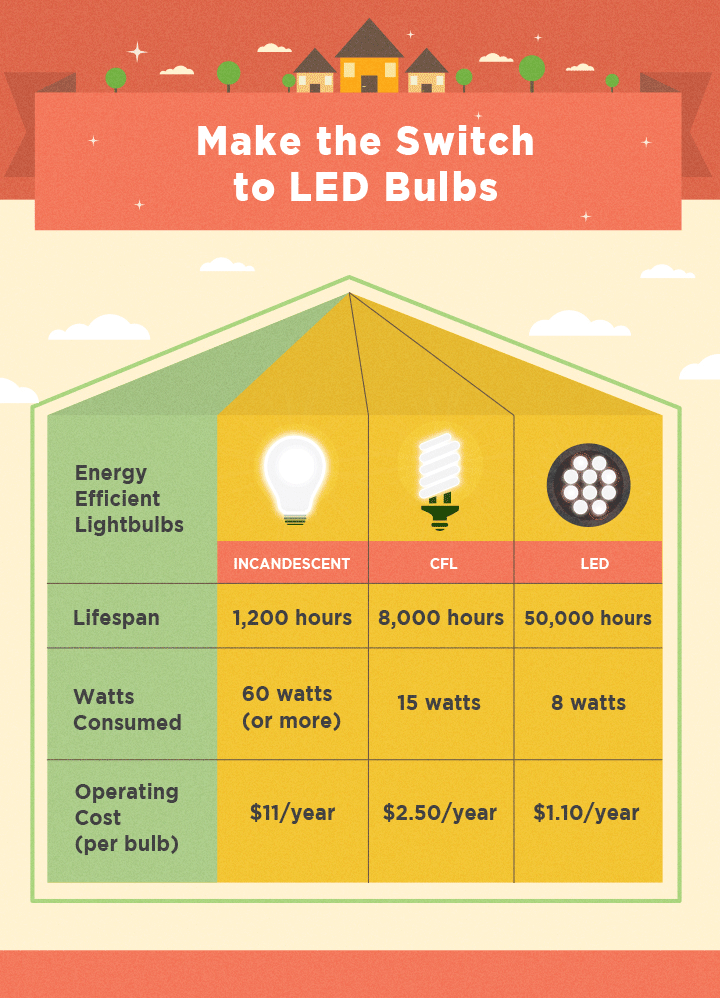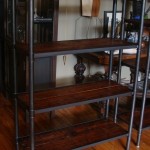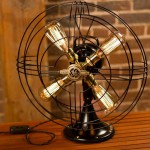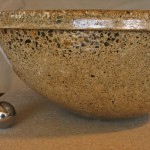Save up to a quarter of your annual electricity bill with these simple energy-saving tips.
Thanks to a series of brilliant innovations, we can extract and burn the decomposed remains of animals and plants that lived millions of years ago, and use it to keep our homes warm in winter, cool houses in the summer, enjoy hot showers, and read long after the sun goes down.
The average American household spends about $2,200 on electricity each year. Collectively, the country’s 115 million homes account for roughly 22.5 percent of nationwide energy consumption. Given that fossil fuels are finite, it’s logical to think we would use this resource as sparingly and efficiently as possible—but we don’t. Instead, our homes waste a great deal of energy because of leaky windows, inefficient appliances, and other easy-to-fix issues. To put the power back in your hands, we have compiled a list of simple hacks everyone can use to cut down on energy costs, and get a more eco-friendly home and a healthier bank balance.
In a bid to make American consumers more aware of their home’s performance, the U.S. Department of Energy breaks down where and how energy is typically consumed. Space heating gobbles up a whopping 42 percent of the average home’s energy, heating water uses 18 percent, refrigeration 5 percent, lighting 5 percent, and another 5 percent can usually be attributed to cooling. Computers, home entertainment systems, and other devices make up the remaining 25 percent. In each case, even small interventions can shave kilowatt-hours off your utility bills. We have included a few suggestions for existing homes as well as ideas to get off to a low-energy start in a new or renovated home.
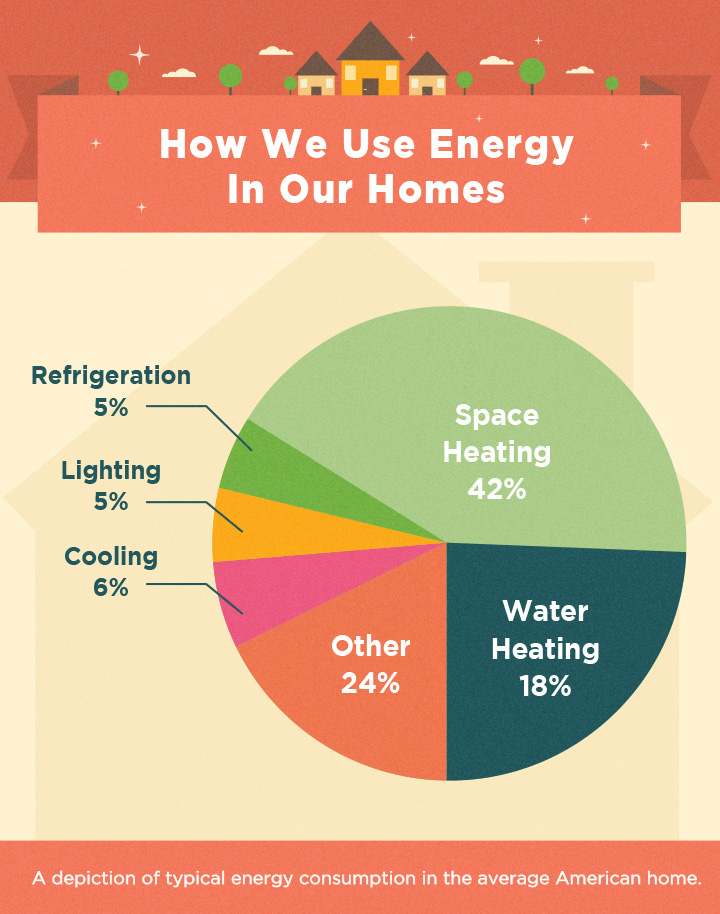 Space Heating
Space Heating
If you walked around the house with an incense stick on a windy day, you may be amazed at how many leaks there are (clue: watch for the incense smoke to blow horizontally.) The older the home, the less airtight it probably is. If a house is leaky, that means the heating system has to work overtime to keep the space warm. Here are a few places you may find drafts:
- Windows
- Fireplace
- Attic
- Basement walls
- Ceilings
- Crawl spaces
- Around fixtures and lights
- Doors
Once you locate leaks, the Department of Energy recommends insulating the areas that allow heat to escape. Use heat-resistant products with the Underwriters Laboratories (UL) logo for optimum safety. While a professional can perform an official audit of a home, budget-minded folks can definitely locate and repair sneaky leaks without the pros.
Another way to reduce energy required for heating is to dial down the thermometer when you’re away from home, or when you’re sleeping. Either you can do this manually, or set a programmable thermostat at the coolest temperature you can tolerate. It turns out the greater the difference in indoor and outdoor temperature, the harder your heating (and cooling) system has to work in order to maintain that discrepancy. Energy.gov estimates for every one degree of temperature reduction, you can expect to save roughly one percent of your energy bill.
Rather than replace every window in the home (it’s not worth scrapping an old-school stained glass window for efficiency’s sake) there are ways to get the most out of each window. Passive solar heating is a really effective way to keep a home warmer without forking out more money. In the northern hemisphere, keep the blinds of south-facing windows open during the day in winter so the sun’s warmth can penetrate the interior and warm up the space naturally. At night, be sure to draw the curtains to trap in the heat for as long as possible. Note that a large percentage of most energy bills stem from heat escaping from windows, so it really pays to give them a bit of extra tender loving care.
Refrigeration
Often times, refrigerators are set to unreasonable, and unnecessarily cold, temperatures, which devour energy. ENERGY STAR rated appliances perform much better than their archaic predecessors, but it still makes sense to keep the fridge at roughly 38 degrees Fahrenheit, and the freezer at zero. It’s also important to keep the freezer well defrosted, since ice buildup reduces efficiency. Also, the consumer energy center advises that a top freezer is the most energy efficient option.
It probably goes without saying, but the larger the fridge, the more energy necessary to run it. For those with a large family, a giant double-door fridge with an icemaker and water filter may make sense. But for one- or two-person homes, consider a smaller unit.
Lighting
For the longest time, alternatives to energy-hungry incandescent bulbs were not only prohibitively expensive, but the quality of light from by compact fluorescent lamps (CFL) or light emitting diodes (LED) could not convince most consumers to make the switch. Thankfully, consumers now have the option for more efficient bulbs as well as a range of choices for warm, comforting light. The upfront investment in CFLs or LEDs may be higher, but these bulbs last considerably longer, and use much less energy over their lifetimes. Illuminating a home with LEDs will result in the most significant savings—up to 25 percent in energy costs plus a 25 times longer lifetime than an incandescent bulb.
Another really easy, relatively obvious way to cut back on lighting costs is to turn the lights off when not in use. Better yet, consider installing wireless sensors, which switch on lights only in the presence of movement. Additionally, there’s generally no reason to use artificial light in the middle of the day. Either use lightweight shades or blinds that allow in natural light or keep window treatments raised, if your location and climate permit. Not only does this make sense in terms of your energy footprint, but it is more aesthetically pleasing and healthier as well. And to really reduce your long-term expenditures, a set of indoor and outdoor solar lamps provide free energy and pay for themselves in no time at all.
Cooling
Many of the heating tips above apply to cooling as well, but there are a couple of other hacks you may not have considered. Ever noticed how animals instinctively go straight to shady areas when the sun is beating down? We can use shade to our advantage as well. Plant a deciduous tree outside south and west-facing windows to provide shade in summer. Before winter hits, the trees will drop their leaves, making way for solar gain to passively heat the house. Another useful tip is to decorate interior spaces with light-colored furniture that reflect heat.
Water Heater
The water heater is perhaps the most overlooked home energy guzzler. Think about it: Every time you turn on any hot faucet or run the dishwasher or washing machine, you place a demand on the hot water heater. A more efficient on-demand water heater or one with a massive storage tank might save you up to 18 percent of your energy bill with a few savvy hacks:
- Lower the thermostat to no more than 120 degrees Fahrenheit.
- Insulate the water heater, paying close attention to manufacturer specifications.
- Use less hot water in general.
- Wash clothes in cold water with suitable detergents and change the settings to cooler temperatures on the dishwasher if you can.
- Consider installing a solar-powered water heater.
Electronics
Most people don’t realize when electronics remain plugged in they continue to draw power, even when not in use. This wasted energy is commonly referred to as vampire power. Slay it by plugging electronics into smart power strips that know when to cut off the energy flow to electronics no longer in use. Like many of the tips above, such a seemingly negligible upfront intervention can result in significant long-term savings. And remember to favor a laptop over a desktop computer, which requires more energy to function.
Conclusion
These hacks demonstrate how even a handful of small, low-tech interventions can slash your energy footprint, save money, and give you the satisfaction of knowing you have done your part to lower humanity’s overall environmental impact.
If this article has you interested in updating your home, consider installing one of these stained glass windows — http://www.custommade.com/gallery/custom-stained-glass/

